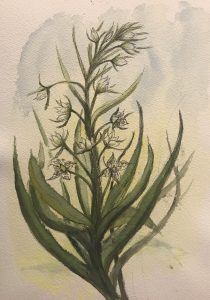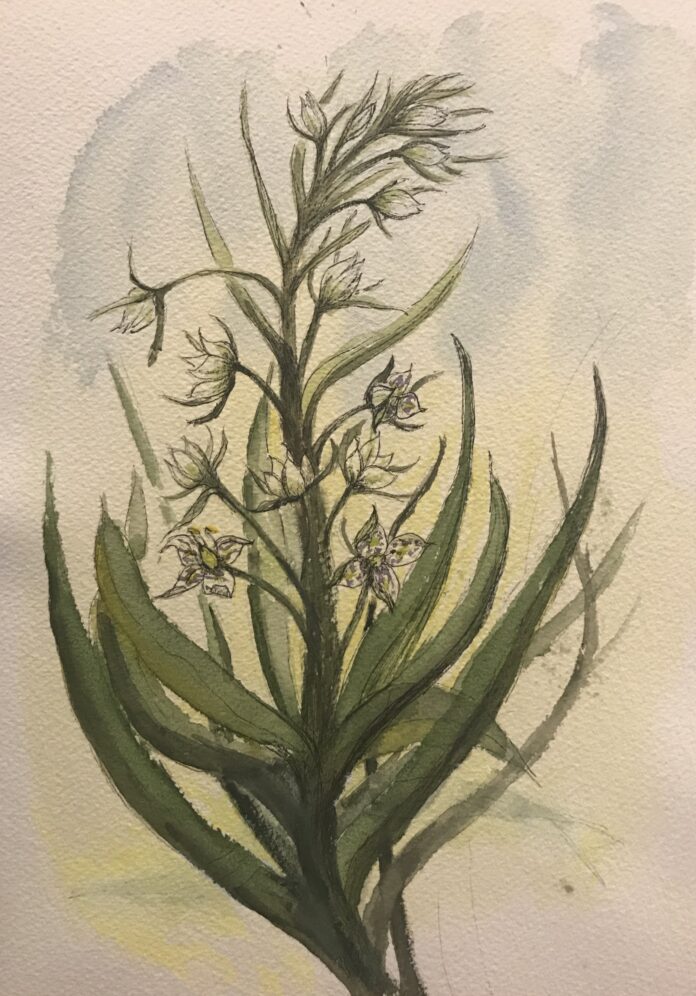BY LESLIE REGO

I own a wildflower identification book where the flowers are organized according to color. What is curious about this book is the size of each section. Yellow flowers occupy the most pages. Following closely are the white flowers, which are only a few pages less. Then, pink flowers and purple flowers, followed by blue flowers, and then red. There are only four pages for orange ones, three pages for brown blooms, and one lonely page for a single green flower! As I write this article, I can think of a few more green flowers to keep company with this lone flower, but for now I am going to explore this solitary member, the green gentian, also know as monument plant.
One glance at the tall sturdy stalk and one can see why the flower is referred to as monument plant. It can grow as high as 8 feet tall. The flower is found in meadows and on open slopes. The leaves are shaped like skinny deer’s ears. They are very long and wide at the bottom of the stem and become increasingly shorter and skinnier as they reach the top. Each plant can have around 600 flowers and each flower can produce approximately 60 seeds! I think the plant is monumentally beautiful, but what I really find fascinating is a recent discovery.
Up to a few years ago it was thought that the green gentian was biennial, meaning the plant bloomed every other year. But after decades of research, Dr. David Inouye, of the Rocky Mountain Biological Laboratory, discovered that the plant only flowers once in its lifetime! This flowering can happen anywhere between 20 and 80 years. After flowering, the plant dies.
This year, I have seen many monument plants in bloom. To understand why is amazing. Dr. Inouye believes that a prolific year is the result of a wet month (like we had in June) followed by a relatively dry month (our July.) The wet month triggers the flowering of the blooms, which are at a microscopic size for years.
Another part of Dr. Inouye’s research was to understand the plant’s reproductive system. Seeds fall to the ground. Since the flower dies after blooming, the mother plant succumbs shortly afterwards, topples over, and thus carpets the seeds. The large leaves and stalk provide ample covering and protection, adding moisture and warmth to the seedlings as the mother plant decomposes.
The seedlings that poke up through the dead leaves have a much better chance of survival than the seeds that were blown away and struggle to sustain themselves. What I love about this reproductive miracle is that it is a rare example within the plant kingdom of a mother plant embracing its young!
Leslie Rego is an Idaho Press Club award-winning columnist, artist and Blaine County resident. To view more of Rego’s art, visit leslierego.com.



